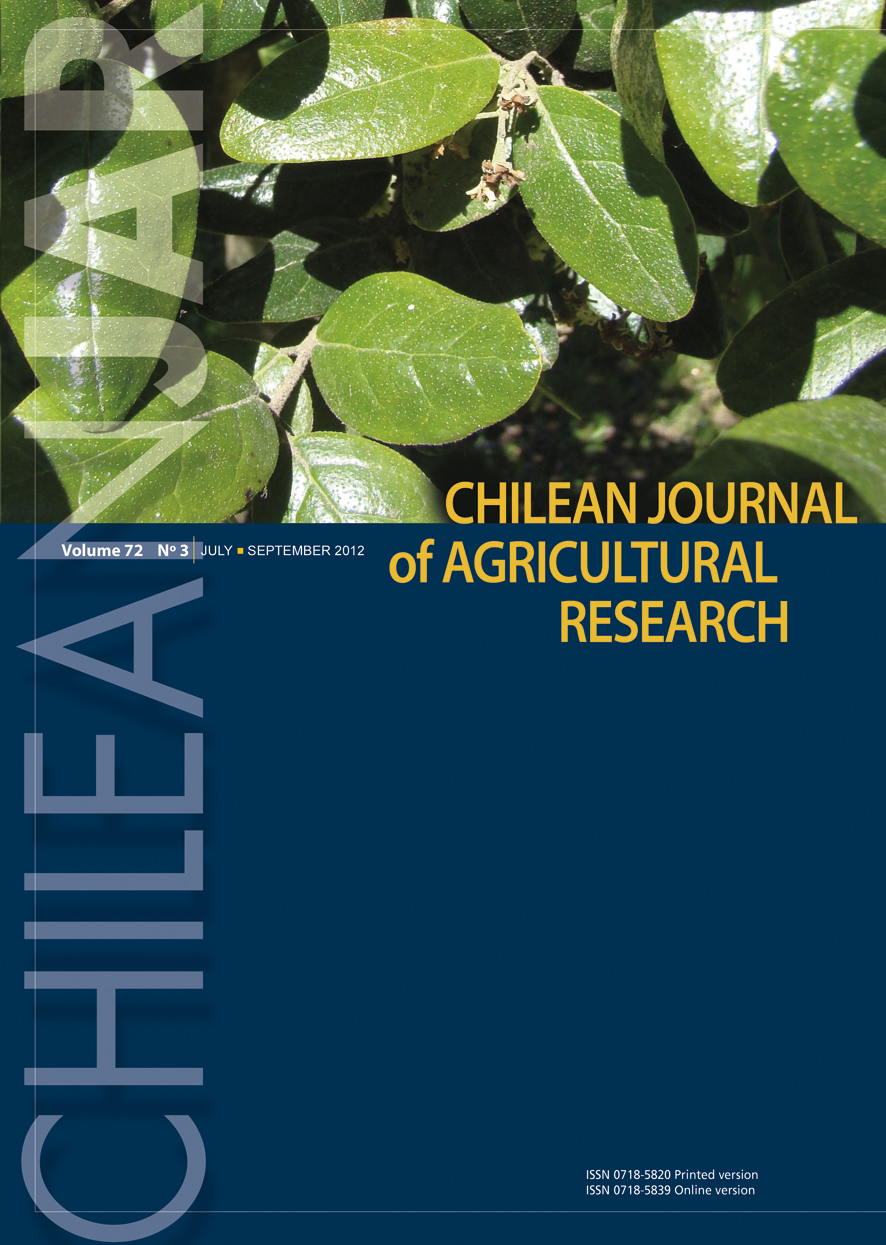
|
Chilean Journal of Agricultural Research
Instituto de Investigaciones Agropecuarias, INIA
ISSN: 0718-5820
EISSN: 0718-5820
Vol. 75, No. 2, 2015, pp. 259-263
|
 Bioline Code: cj15035
Bioline Code: cj15035
Full paper language: English
Document type: Research Article
Document available free of charge
|
|
|
Chilean Journal of Agricultural Research, Vol. 75, No. 2, 2015, pp. 259-263
| en |
Effect of micro-alga supplementation on goat and cow milk fatty acid composition
Póti, Péter; Pajor, Ferenc; Bodnár, Ákos; Penksza, Károly & Köles, Péter
Abstract
The microalgae cultivation has been developed over the last decades because it is capable of producing valuable metabolites,
such as n-3 fatty acids for nutraceutical purposes. Aim of this study was to investigate the effect of the micro-alga as fat
supplement on fatty acid profile of goat and cow milk, with particular reference to n-3 fatty acids and rumenic acid. Twenty
dairy goats and 16 dairy cows were randomly allocated to two isonitrogenous treatment groups to investigate the effect of
micro-alga supplementation on the composition and fatty acid profile of milk. The 1st goat group was fed with alfalfa hay
and concentrate; the 2nd goat group received the same forages but the concentrate was supplemented with 10 g kg-1 DM
intake micro-alga. The control group cows were fed with alfalfa hay, corn silage and concentrate, while the experimental
animals were fed with the same forages but the concentrate was supplemented with 7.4 g kg-1 DM intake micro-alga. The
experimental periods lasted for 17 d. The micro-alga supplements considerably increased rumenic acid concentration in
milk (1.20% vs. 1.54%, P < 0.001 for goats; 0.75% vs. 0.85%, P < 0.05 for cows). The n-3 fatty acids were higher in milk
(1.02 vs. 1.35; P < 0.001 for goats; 0.47 vs. 0.56; P < 0.05 for cows) and in addition the n-6/n-3 ratio was also more favorable
in the micro-alga supplemented groups (3.53 vs. 2.88; P < 0.01 for goats; 4.18 vs. 3.36; P < 0.05 for cows). It is concluded
that the diet with micro-alga supplementation significantly increased the concentration of beneficial fatty acids in both goat
and cow milk.
Keywords
Conjugated linoleic acid; n-3 fatty acids; micro-alga; milk
|
| |
© Copyright 2015 - Chilean Journal of Agricultural Research
Alternative site location: http://www.inia.cl
|
|
